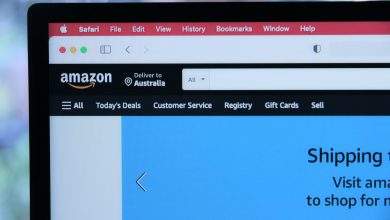
How to Convert Your Website to a Mobile App
The rise of mobile technology has revolutionized the way businesses and individuals interact. As a result, more and more companies are looking for ways to make their websites accessible on mobile devices. Converting your website into a mobile app is one way to ensure that your customers can access your content while they are on the go. In this article, we will look at the steps required to convert your website into a mobile app, as well as explore some of the advantages and considerations of doing so.
Benefits of Converting
Converting your website to a mobile app has numerous benefits. The first and most obvious benefit is the increase in accessibility. With a mobile app, users can access your services or products with just one click on their smartphone, anywhere and at any time. This convenience leads to more engagement, increased customer loyalty, and ultimately higher sales.
Another benefit of converting your website to a mobile app is the ability to target specific audiences. Apps allow for personalization by utilizing push notifications or in-app messaging features that notify users of new content or promotions that are tailored specifically to them. This means you can develop targeted marketing campaigns that reach customers who have already shown interest in your brand.
Lastly, having a mobile app increases brand recognition and credibility. By offering an app that provides value-added services, you show customers that you are invested in improving their experience with your brand. This creates trust between you and your customers leading to enhanced loyalty and positive reviews which will attract even more potential clients towards the business.

Step 1: Research Mobile Platforms
When converting a website to a mobile app, it’s important to research the available mobile platforms. The two most popular platforms are iOS and Android. Both have their own unique features, user interfaces, and programming languages. It’s essential to understand the differences between these two platforms before choosing which one to develop your app on.
iOS is known for its sleek design and user-friendly interface. It uses Swift as its programming language and requires specific development tools like Xcode. On the other hand, Android has a more customizable interface that allows greater flexibility when developing an app. It uses Java as its primary programming language and requires software such as Android Studio.
It’s also crucial to consider which platform your target audience prefers using. If you’re targeting Apple users, then developing an iOS app would be more beneficial, while Android would be appropriate if your target audience consists of Android users. By conducting thorough research on mobile platforms, you can make an informed decision on which platform best suits your needs in creating a successful mobile app conversion from your website.

Step 2: Decide on a Platform
Once you have decided to convert your website into a mobile app, the next step is to choose the platform that best suits your needs. There are two main platforms to consider for mobile app development: iOS and Android. Depending on your target audience, one of these may be a better fit than the other.
iOS apps are typically more popular in North America and Europe, while Android dominates in Asia and Africa. It’s also worth considering which platform offers greater flexibility with design and functionality for your specific industry or niche. Another factor to weigh when deciding between iOS and Android is cost – developing an app for both platforms can be expensive, so it’s important to determine which platform will bring in the most revenue.
Regardless of which platform you choose, make sure that it aligns with your overall business goals and objectives for creating a mobile app. By carefully weighing the pros and cons of each platform, you can ensure that your new mobile app will be optimized for success from day one.
Step 3: Choose an App Builder
When it comes to choosing an app builder, there are many options available in the market. However, before making a decision, it is important to consider factors such as ease of use, customization options, integrations with other tools and platforms, and pricing models.
One popular option for app building is Appy Pie. This platform offers drag-and-drop functionality and a wide range of templates to choose from. It also allows for integration with various third-party services such as social media platforms and payment gateways.
Another option worth considering is BuildFire, which provides a user-friendly interface and extensive customization options. The platform also offers features such as push notifications and analytics tracking to help improve engagement with your mobile app users.
Ultimately, the choice of which app builder to use will depend on your specific business needs and budget. It is recommended that you weigh the pros and cons of each platform carefully before making a final decision.

Step 4: Design Your App
When designing your app, it’s essential to think about the user experience. You want your app to be easy to navigate and visually appealing. Start by creating wireframes or sketches of your app’s layout and features. This will give you a clear idea of how the app will function and help you identify any potential usability issues.
Next, consider the branding for your app. Make sure that it aligns with your website’s branding but also stands out as its own entity. Use consistent colors, fonts, and imagery throughout your design to create a cohesive look.
Finally, test your app design on different devices and screen sizes to ensure that it looks great on all platforms. Try to get feedback from beta testers or focus groups to identify any areas where users may struggle with navigation or find the design confusing. By putting in the time and effort upfront, you can create an app that users love and helps drive engagement with your brand.

Step 5: Test the App
Once you have completed your app development, it’s time to test the app before launching it. Testing is a crucial step in the mobile app development process as it helps developers identify any bugs or glitches that could hinder the user experience. To ensure smooth functioning and superior performance of your app, run various tests on different devices and operating systems.
The first type of testing is functional testing, which involves checking if all features are working correctly, including navigation, links, buttons, and forms. Next comes usability testing that evaluates how easy the app is to use from a user perspective. Additionally, compatibility testing ensures that your app works seamlessly with various devices and operating systems.
Once you have resolved all issues detected during pre-launch testing phases, perform final quality assurance (QA) checks before deploying the mobile application. Testing is an ongoing process; therefore, after deployment continue monitoring feedback from users to address any arising technical issues promptly.
Step 6: Publish & Promote
Now that you have successfully converted your website into a mobile app, it’s time to publish and promote it. Before publishing the app, make sure to thoroughly test it to ensure there are no bugs or glitches. Once you’re confident in the app’s functionality, submit it to the appropriate app stores such as the Apple App Store and Google Play.
To promote your mobile app, utilize social media platforms and email marketing campaigns. Reach out to your existing audience by sending an email blast announcing the launch of your new mobile app, offering incentives such as discounts or exclusive content for downloading. Additionally, create social media posts showcasing the features and benefits of using your mobile app.
Finally, consider investing in paid advertising such as Facebook ads or Google AdWords for maximum visibility. With strategic promotion efforts in place, you can increase downloads and engagement with your new mobile app which can lead to business growth and increased revenue opportunities.
Conclusion: Enjoy Your New App
In conclusion, once you have successfully converted your website to a mobile app, it’s time to enjoy the new platform. You can now access your website through the app from anywhere with just a few taps on your smartphone or tablet. It is important to note that having an app gives you an added advantage over competitors who do not have one.
Your customers will appreciate the convenience and accessibility of using your app, which can lead to increased engagement and sales. Additionally, an app provides opportunities for personalized communication with your customers through push notifications and in-app messaging. This allows you to build a stronger relationship with them and create a loyal customer base.
Remember to regularly update your mobile application with fresh content, features, and bug fixes. With these tips in mind, enjoy the benefits of having a mobile app for your website – increased user experience satisfaction, brand loyalty & awareness and improved business outcomes ultimately leading towards growth!



